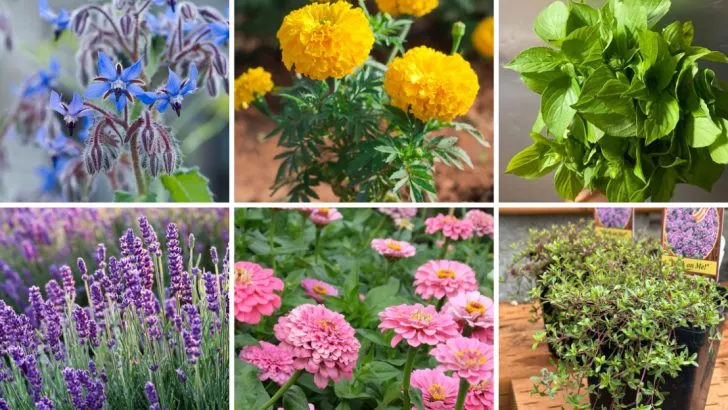Sunflowers are already stars in the garden—tall, bold, and impossible to ignore. But even the brightest blooms can benefit from good company. Choosing the right plants to grow nearby isn’t just about looks; it can help your sunflowers stay healthy, attract helpful insects, and make the most of your garden space.
In this list, you’ll find 16 companion plants that actually pull their weight—some deter pests, some improve soil, and a few simply get along well with those towering yellow giants. Think of it as building a support cast for your sunflowers to thrive in good company.
Borage
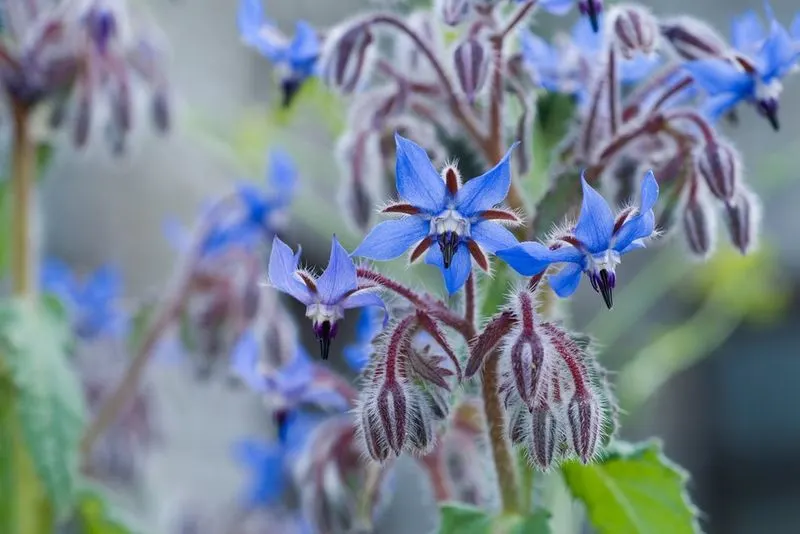
Borage, with its star-shaped blue flowers, is a magnet for pollinators. This plant not only enhances the beauty of your sunflower patch but also attracts bees and butterflies, boosting pollination. Borage is believed to improve the growth and flavor of nearby plants, making it an ideal companion for your sunflowers. Planted together, they create a vibrant and lively display that entices beneficial insects, aiding in natural pest control. Its leaves, when composted, add valuable minerals back to your soil, enriching it with nutrients. Borage truly offers a multifaceted boost to any sunflower garden.
Marigold

Marigolds, with their dazzling orange and yellow blooms, work wonders as companions to sunflowers. These cheerful flowers have a unique scent that helps repel nematodes and other pests, protecting your sunflowers from potential harm. Marigolds’ presence is not just protective but also adds a delightful splash of color to your garden. Their ability to thrive in similar conditions as sunflowers makes them an easy pairing. By planting marigolds around sunflowers, you create a visually appealing and pest-resistant garden patch, ensuring a healthier environment for all your plants.
Basil
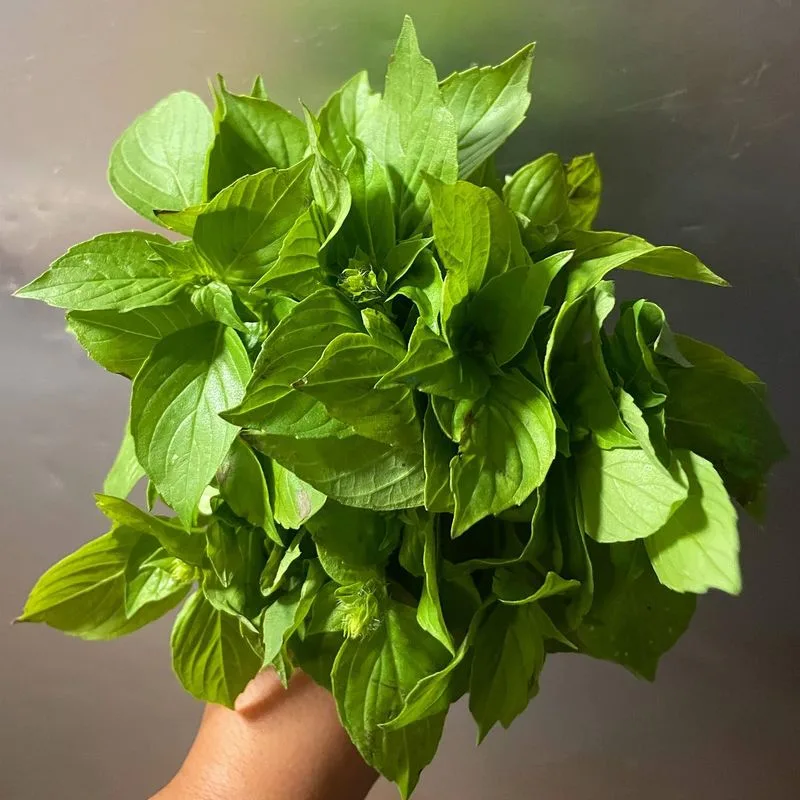
Basil offers more than just aromatic leaves; it’s a trusty companion for sunflowers. This herb helps deter harmful insects with its pungent fragrance, providing a natural protective barrier. Basil also attracts beneficial insects like bees, enhancing pollination. When planted close to sunflowers, basil can improve their growth and overall health. The combination of lush green basil leaves and towering sunflowers creates a visually appealing contrast. Whether you’re looking to boost your garden’s productivity or simply enjoy fresh basil, this pairing is a rewarding choice for any gardener.
Lavender
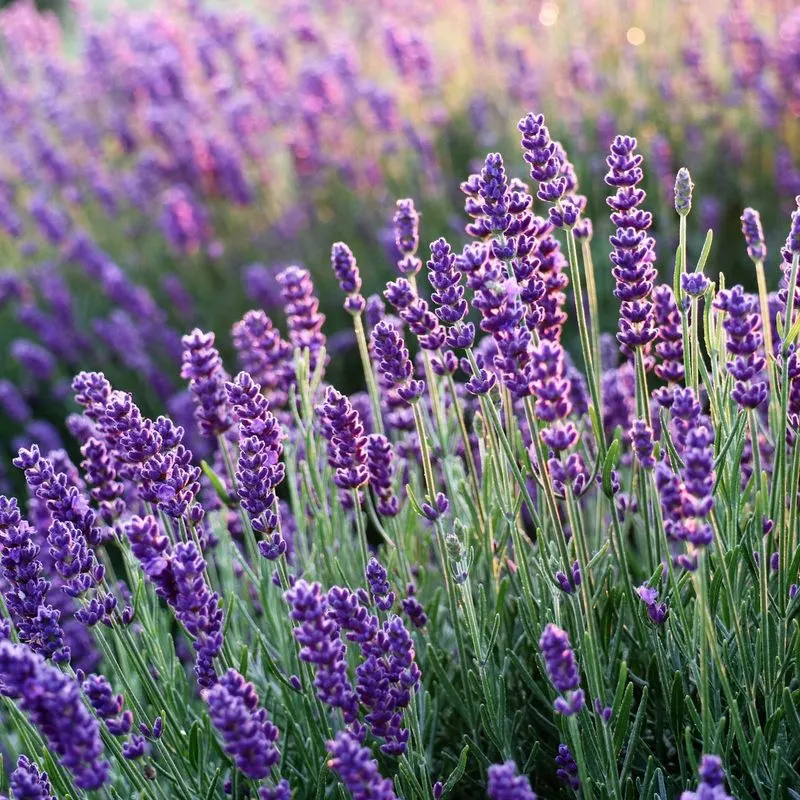
Lavender is a soothing companion to sunflowers, with its fragrant purple flowers creating a serene garden atmosphere. This aromatic plant works diligently to deter pests, including aphids and flies, from your sunflowers. Lavender’s scent attracts beneficial pollinators, ensuring that your sunflowers thrive. The striking combination of lavender’s purple and sunflowers’ bright yellow creates a picturesque garden. Additionally, lavender contributes to soil health, offering a natural way to maintain garden vitality. With lavender as a companion, your sunflower garden not only looks beautiful but also functions more effectively.
Cucumbers

Cucumbers and sunflowers make for a mutually beneficial partnership. Sunflowers provide a natural trellis for cucumber vines, allowing them to climb and receive ample sunlight. This vertical growth can maximize space in your garden. In return, cucumbers help retain soil moisture, benefiting both plants. Their large leaves also offer some shade to sunflower roots, keeping the soil cool. This harmonious pairing not only increases productivity but also creates a lush, green display. Together, cucumbers and sunflowers contribute to a thriving and efficient garden environment, enhancing both vertical and ground-level growth.
Zinnias

Zinnias, with their bright and varied blooms, are fantastic companions for sunflowers. These flowers attract a plethora of pollinators, including butterflies, which are essential for sunflower pollination. Zinnias’ vivid colors add an extra layer of beauty and diversity to your sunflower garden. They thrive in similar conditions, making them easy to grow alongside sunflowers. By planting zinnias, you ensure a continuous display of color and activity in your garden. This pairing not only enhances visual appeal but also supports a healthy ecosystem, benefiting all surrounding plants and attracting beneficial insects.
Peas
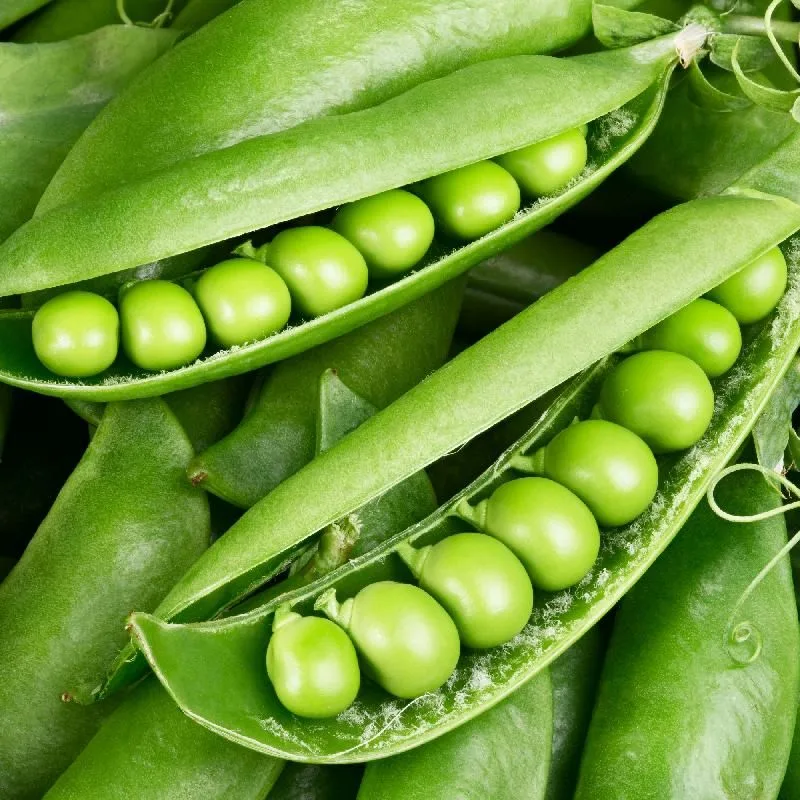
Peas find a supportive ally in sunflowers, utilizing their sturdy stalks as natural climbing structures. This combination optimizes garden space and facilitates better air circulation around both plants. Peas, being legumes, enrich the soil with nitrogen, a crucial nutrient for sunflowers, promoting healthier growth. In return, sunflowers offer support and shade, aiding pea plant development. Together, they form a symbiotic relationship that benefits their growth cycles. This pairing not only enhances the garden’s productivity but also adds a touch of greenery and floral beauty, making it an efficient and aesthetically pleasing choice.
Thyme

Thyme, with its aromatic foliage and delicate flowers, is a wonderful low-growing companion for sunflowers. This herb acts as a living mulch, helping to retain soil moisture and suppress weeds around sunflower bases. Its scent deters pests, providing natural protection. Thyme’s small, purple blooms attract pollinators, further benefiting sunflower growth. This ground cover helps create a neat and tidy appearance, complementing the towering sunflowers above. Together, thyme and sunflowers form a visually appealing and functional garden duo, enhancing both the health and beauty of your garden space.
Corn

Corn and sunflowers make striking garden partners, both reaching impressive heights. Sunflowers can provide windbreaks for corn, protecting them from strong gusts. In return, corn’s thick roots help stabilize the soil, preventing erosion. This combination promotes a healthy garden environment, enhancing soil structure and fertility. Their towering presence creates a majestic backdrop for any garden, offering vertical interest. By growing corn and sunflowers together, you create a partnership that benefits from shared resources and complements each other visually. This pairing turns any garden into a field of gold, rich with texture and color.
Mint

Mint, with its refreshing aroma, makes an excellent ground cover companion for sunflowers. Its fragrant leaves help repel unwanted insects, acting as a natural pest deterrent. The dense growth of mint also aids in weed suppression, keeping the area around sunflower bases clean. However, mint can be invasive, so it’s best planted in containers near sunflowers to control its spread. This pairing not only keeps pests at bay but also adds a lush green contrast to towering sunflowers. Together, they create a balanced and aromatic garden environment, ensuring both beauty and functionality.
Nasturtiums
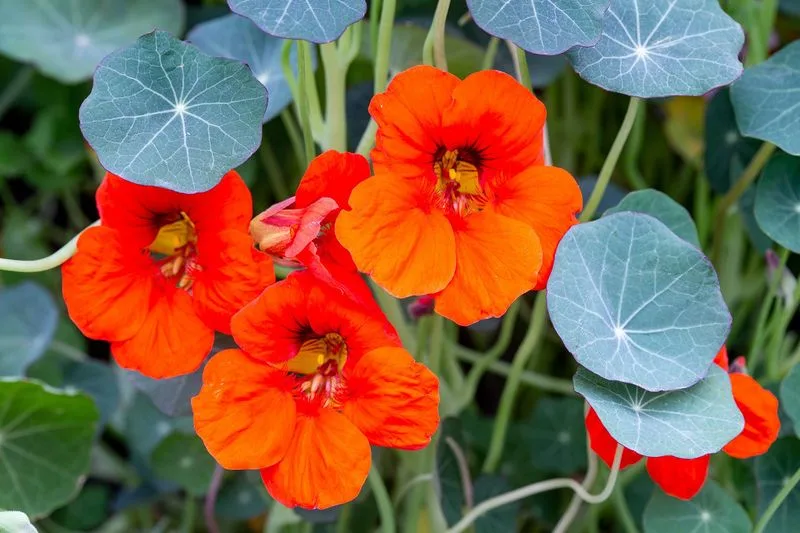
Nasturtiums, with their bright, cheerful flowers, complement sunflowers beautifully. These plants serve as a trap crop, luring aphids away from sunflowers and protecting them from infestations. Nasturtiums’ vibrant red and yellow blooms add a splash of color at the base of sunflowers, enhancing visual appeal. They thrive in similar conditions, making them easy to grow together. This partnership not only protects your sunflowers but also enriches the garden’s aesthetic. By planting nasturtiums and sunflowers together, you create a dynamic and colorful garden space, full of life and activity.
Calendula

Calendula, often known as pot marigold, is a vibrant companion for sunflowers. Its golden blooms attract beneficial insects, promoting pollination and natural pest control. Calendula also serves as a natural soil conditioner, improving soil health and offering protection against certain pests. Planted with sunflowers, calendula enhances the garden’s visual appeal with its vivid colors. This partnership not only supports a healthy garden ecosystem but also adds aesthetic value. Together, calendula and sunflowers create a sunny and inviting garden atmosphere, where both plants can thrive and support each other’s growth.
Dill
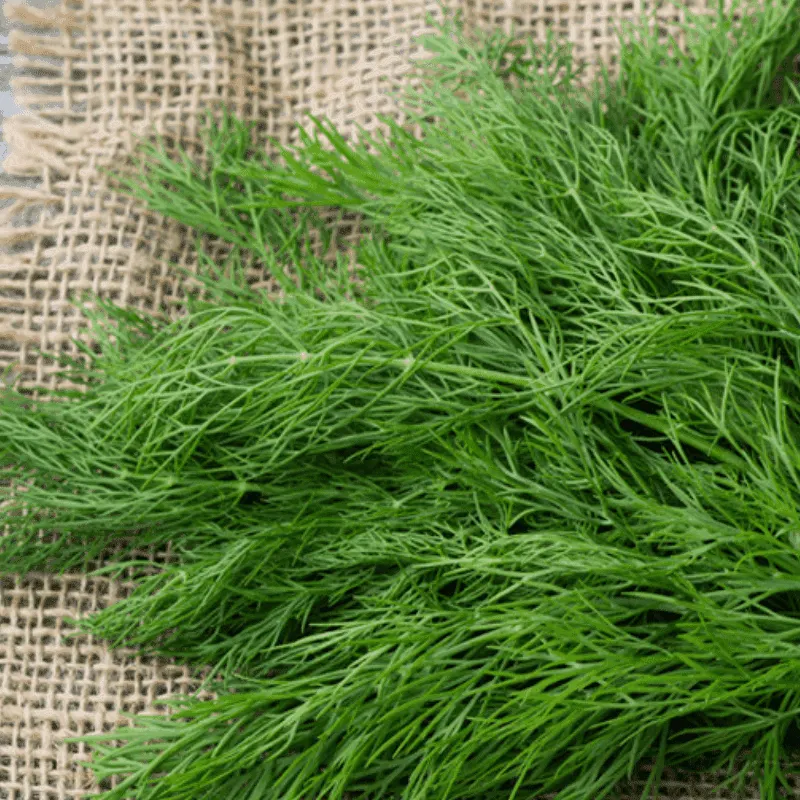
Dill, with its feathery foliage, is a herb that complements sunflowers well. It attracts beneficial insects like ladybugs and predatory wasps, which help control pest populations in the garden. Dill’s delicate leaves create a contrast with the boldness of sunflower blooms, adding texture and diversity. Its presence supports a healthier garden environment by encouraging a balanced ecosystem. Dill also offers culinary benefits, providing fresh herbs for the kitchen. Together with sunflowers, dill creates a harmonious and functional garden, enhancing both aesthetic appeal and ecological balance, making it a perfect gardening duo.
Chives
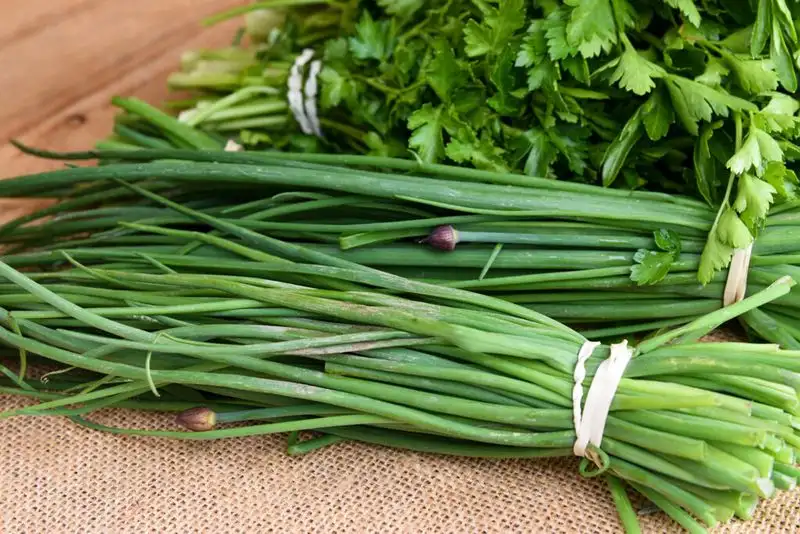
Chives, with their delicate purple blossoms, make a charming underplanting for sunflowers. These hardy perennials help deter pests with their mild onion scent, providing a natural defense for sunflowers. Chives also attract pollinators, enhancing sunflower growth. Their green, grass-like leaves offer a lush contrast to the towering sunflower stalks. This pairing is both visually appealing and practical, promoting a healthy garden environment. Chives are also a wonderful culinary addition, offering fresh flavors for your dishes. Together, sunflowers and chives form a delightful and functional garden combination, supporting each other’s growth beautifully.
Amaranth

Amaranth, with its striking foliage and grain-like flowers, is a stunning companion for sunflowers. This plant not only adds visual interest with its vibrant red and purple hues but also thrives in similar conditions. Amaranth’s deep roots help improve soil structure, benefiting nearby sunflowers. Its tall stature complements sunflowers, creating a dynamic vertical display. Amaranth also provides edible seeds and leaves, adding nutritional value to your garden. Together, sunflowers and amaranth create a colorful and productive garden space, enhancing both the aesthetic and functional aspects of your landscape.
Rosemary

Rosemary, known for its aromatic leaves, is a Mediterranean herb that pairs well with sunflowers. Its scent deters pests, while its presence attracts pollinators, supporting sunflower health. Rosemary’s hardy nature and ability to withstand dry conditions make it an ideal companion, thriving alongside sunflowers in sunny spots. Its woody stems and needle-like leaves add texture and fragrance to the garden, complementing the bold sunflower blooms. This pairing not only enhances garden aesthetics but also creates a functional environment, where both plants benefit from each other’s presence and contribute to a thriving garden ecosystem.

